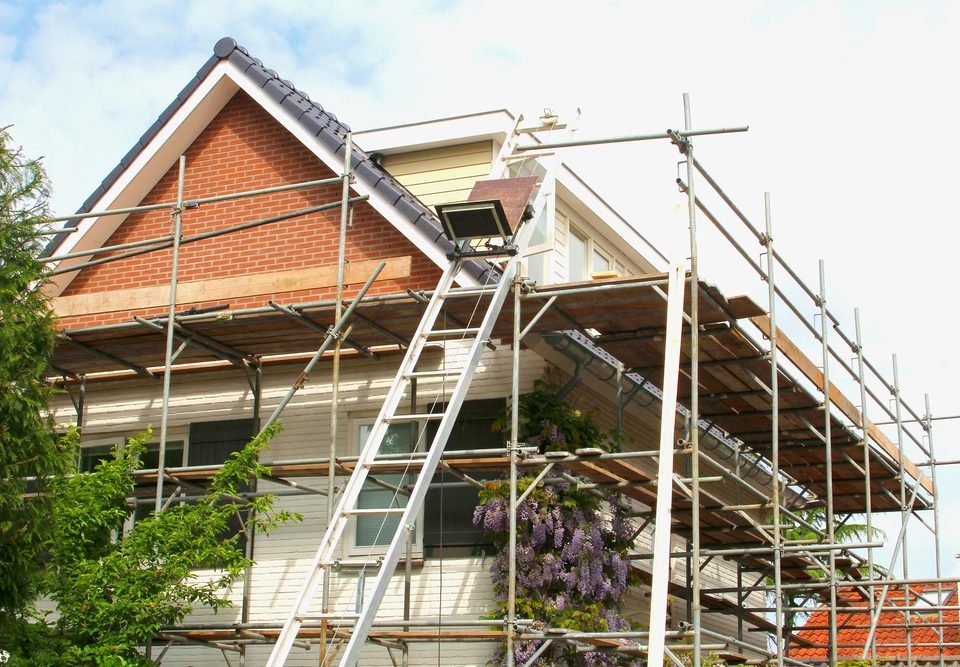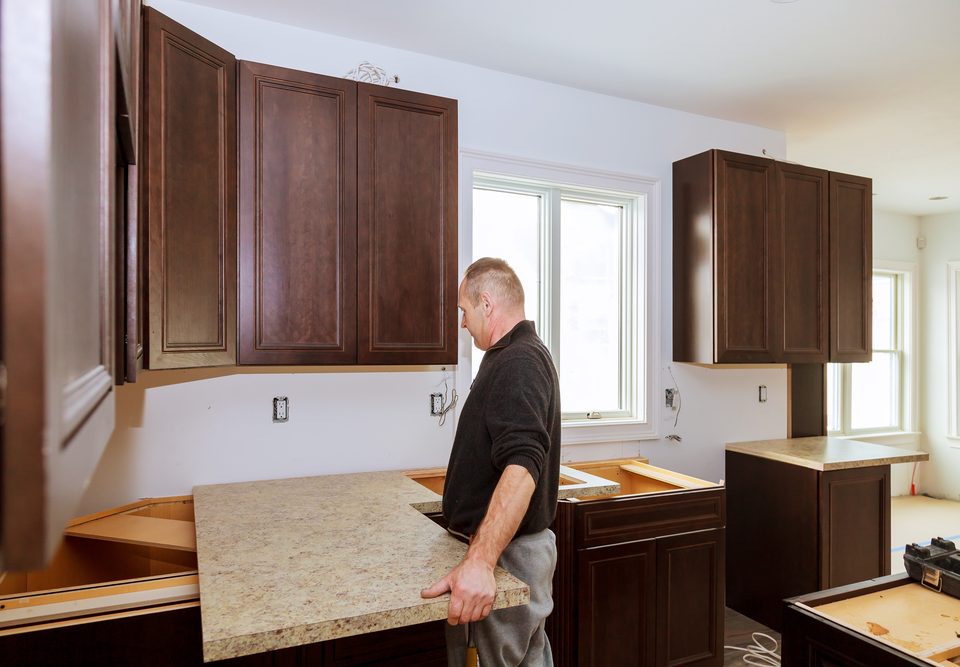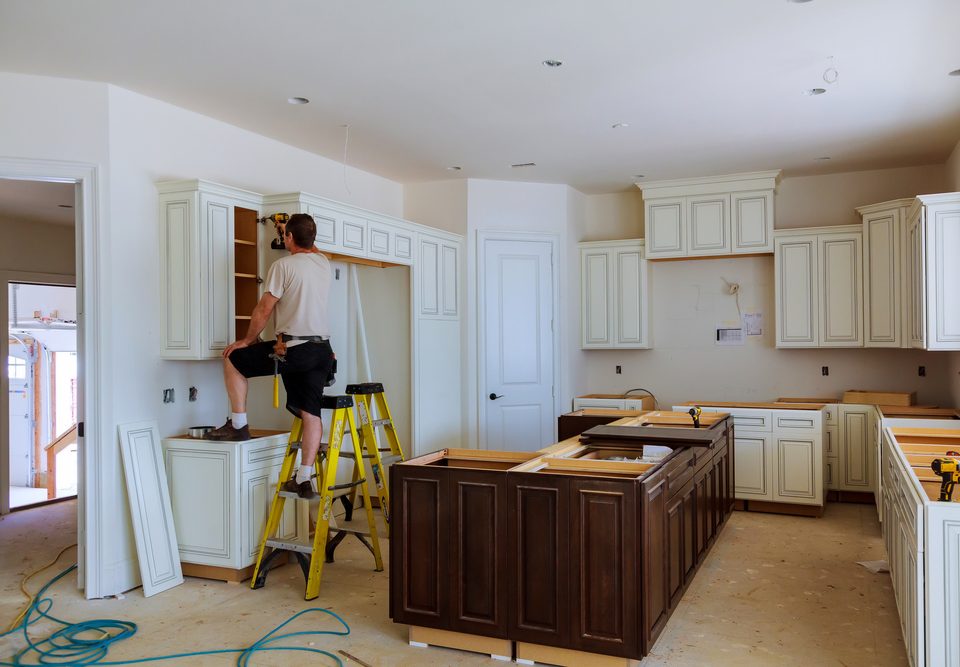- Call Today:
- 0333 358 3991
- myproject@r8e.co.uk
Loft Conversions: All You Need to Know

How Much Do Loft Conversions in Surrey Cost?
May 1, 2019
What Does A Kitchen Renovation Cost in Surrey?
May 17, 2019So, you are thinking of doing a loft conversion, but you’re not too sure where to start? We’ve put together a detailed list of everything you need to know to get started on your loft conversion – the benefits, limitations, and costs involved.

The benefits
Although it does carry a fair amount of costs, which we will cover later, a loft conversion has plenty of benefits. By adding an extra room, be it a bathroom, reading nook, or bedroom, this additional space adds value to your property should you want to sell at a later stage.
If you are living in a smaller house, a loft conversion allows you to create a functional area in your home, giving you extra space to use as you need. Making use of existing space is far more budget-friendly as opposed to building on a new room to your house.
It is far easier to extend your home than to move. If you are looking for a larger home, then doing a loft conversion could be a simple, cheaper answer instead of purchasing a newer, bigger house. By using the space wisely, you can add an entirely new room to your home at a lower cost.
Some inspiration
There are plenty of ideas on what to do with your loft area and this depends on your needs, as well the roof structure and height. The most common types of conversions that are considered are bedrooms, bathrooms, lounge areas, or even a quiet reading nook.
You could even simply use it as a storage space to keep your home organised. You need to consider the layout of your completed loft conversion, taking care to keep proportion in the space to ensure that you can position furniture and storage.
There are plenty of loft conversion ideas to let your mind go wild!

- Extra bedroom
If your loft space allows, an additional bedroom or even master room could be considered. Adding an additional bedroom is a sure way to increase the value of your home!
- Bathroom
For smaller spaces above bedrooms, you could convert the loft into an en-suite bathroom. While plumbing options would need to be evaluated, converting a loft into a bathroom is not as intense as you would imagine.
- Lounge
This option is often appealing to parents, as a loft lounge gives kids their own fun and private space. If you would like to put a TV or some electronics in the loft then electrical alterations may be required, but the added space is worth it!
- Reading nook
If your loft space is very small, a quiet reading nook is the perfect option. All you’ll need is a fresh lick of paint, if necessary, a new carpet, and the perfect comfy chair to sink into with a good book.
A loft conversion can be the perfect way to add a much-needed separate teenage den, cinema room. As more people are working from home there is merit to adding a home office to your house.
You may find that this new addition can add undiscovered amazing views to your home which you can take advantage of, creating possibly a new living area that everyone can enjoy.
The tough questions
We know the thought of doing a loft conversion is exciting and the ideas are already rolling in, but what are the limitations and what should you consider? There are many questions you need to ask before you jump into your new loft conversion project, but these 3 should be your main deciding factors:
1. Head height
You need to make sure there is enough height in your loft. You need to have a minimum height of 2.2m of useable space. The higher the angle of the roof pitch, the higher the head height will be.
2. Weight
Your house needs to be able to manage the weight of the loft. This is something the building control officer will look t, but you should be able to gauge by assessing what you would like to convert the loft to, versus the current structure of your home.
3. Obstacles
Roofs are often used to house water tanks or chimney stacks. These obstacles will either need to be worked into the design or cornered off. Either way, this will affect the overall space available to you in your loft.
Design considerations
Once you’ve decided on how you would like to convert your loft, and whether you are able to use the space available, you can start looking at the finer details.

· The staircase
Sometimes we’re so focused on the actual loft design we forget we need a way to reach it. While your new loft will give you more space, you also need to think about where the stairs will go, and how that will impact on your existing living space. The design of the staircase, as well as the size and shape, will impact aesthetically as well.
A decision to go with a design that is steep, wide or spiral will change the visual and usable space and can be a design statement as well if a splash of colour or modern materials is used.
· Lighting
Don’t let your beautiful new space go unused because it feels dark and dreary. Bring light into your loft with several different options. From downlights, lamps, or windows, you can make sure your space feels bright and light. Lofts are already a small space, so ensuring there is enough light is very important.
Skylights are also a great option and will not break the contours of your house as seen from outside. They are a super option for opening up the space visually and do not take up precious space.
Although a bit costlier, dormer windows are a popular classic option for bringing in natural light, as well as adding space to your extension.
· Plumbing
If you are thinking of converting to a bathroom, or if you have space, a main bedroom with a bathroom, then plumbing will play a major role in your design consideration.
It may seem like a big job but branching off of your existing plumbing system is possible. The best place to add a bathroom is above an existing bathroom so that existing plumbing inlets and outlets can be utilised.
· Insulation
As your loft technically forms part of your roof, there isn’t much insulation. This will need to be added in the roof, between and below the rafter. Good insulation can be a cost-effective way of cold and heat proofing your new living space.
· Heating
If insulation isn’t enough, then extending your central heating to your loft is your best option.
Alternatively, heat generators such as radiators or underfloor heating are also options. It can get rather cold in lofts due to less solid wall area, so making sure that you plan for sufficient heating is important.
· Soundproofing
The last thing you want is to hear constant footsteps and noise from above you, so soundproofing the new floor will help alleviate any noise nuisances.
· Ventilation
If you don’t have windows in your loft it can feel a bit stuffy, particularly if it is a smaller area. A build-up of CO2 can be dangerous, so ensuring you have enough airflow and effective roof ventilation can help prevent condensation and CO2 build-up.
Moist or warm air can seep into an attic area from the living space below. Ventilation is required to allow heat and moisture to escape. Attic vents on the roof or in the eaves can be installed, alternatively, vapour barriers can be fitted.
· Storage space
When you convert your loft there is very little space for storage, but with a few clever tricks, these can be overcome. A great way to include storage space is by building hatches in the eaves of the roof with storage bins.
Embrace your inner Marie Kondo and try to think of ways to simplify your designs.
· Electrics
To include lighting or any electronics into your loft you will need to do some electrical alterations. If you are thinking of converting a loft into a lounge or entertainment area, you will need to consider where you will put electrical wiring and plug points – depending on where you plan on setting up your gadgets and electronics.
Types of conversions
The options are endless and can be decided on by looking at your budget, roof type, and what you are using your loft conversion for. The 3 main types of conversions are internal lofts, dormer lofts, and roof off lofts.
1. Internal loft
The most cost-effective option, this type of conversion is as simple as converting an existing loft space with as little alterations as possible. Updating the floor, adding new paint, insulation, and windows into the existing space are the only major additions.
2. Dormer lofts
While still maintaining the existing roof structure, dormer windows are added to increase the height of the room. This usually means a bigger space to work with and is often the popular choice for use as a bedroom or study area. You can choose from 5 different types of dormer conversions.
- The single dormer conversion is the simpler of the 5, with a small dormer window being added to a section, most commonly the middle, of the roof. You can also opt to place a single dormer window on either side of the roof for additional space.
- The full-width dormer spans across the entire length of the one side of the roof, which creates a nice long loft with plenty of space for your ideal loft dreams.
- A side-dormer is placed at the front of the house to increase the head height of the house with a hipped roof.
- The L-shaped dormer is most commonly used in Victorian houses where there is an addition to the rear of the house.
- A hip-to-gable dormer adds extra space with full headroom in roofs where one or more of the hips is replaced with a gable wall.
3. Roof-off lofts
This involved the entire roof having to be removed and rebuilt, which is the costly option of the three.
A mansard conversion is where an entirely new structure is attached to one or both sides of the roof – picture a roof that is almost entirely flat on top! This must be done on roofs where there is little to no headspace and requires a planning permit.
Another option for those who have limited headspace is a pre-fabricated loft. This is far more labour intensive and can set you back a pretty penny.

Implementation
If everything still sounds exciting and you are ready to get the ball rolling on your brand-new loft, here are the final steps to get you your dream loft!
· Budget
Although it is cheaper to do a loft conversion as opposed to building onto your home, the costs can become steep, and if you are not careful you may exceed your budget. The cost of a loft conversion varies according to the size of the area, as well as the type of conversion you require.
What are the costs of a loft conversion in Surrey?
If you require a simple room in the roof style conversion, then you are looking at around £15 000. This is the cheapest and simplest option to look at.
Dormer lofts, however, can be a more appealing option as the window adds volume allowing more full head height. For a basic conversion, dormer lofts tend to go for £20 000. The hip-to-gable dormer loft conversion is popular in Surrey and can cost up to £35 000.
For a pricier option that allows for more space and natural light, the mansard loft conversion can cost up to £45 000. Any time the roof structure has to be removed or reshaped the price of the loft conversion can rise considerably.

· Planning permission
Although we have provided a substantial amount of information to get you started on your loft conversion, it is still important to understand what your planning permission are before you carry out a loft conversion. Many loft conversions are seen as Permitted Development (PD), but there are still several specified parameters you will need to adhere to.
If you plan on going beyond your conditions of the PD, or there are any regulations or restrictions on your building plans, then you will need to apply for planning permission.
· Party Walls
Is your house semi-detached or terraced? If you answered yes, then you will need to notify your neighbours before going ahead with the building. This forms a part of the Party Wall Act of 1996.
· Building regulations
Although the Party Walls and planning permission are not applicable to all, anyone who is doing a loft conversion will need Building Regulations approval before going ahead.
· Insurance / safety
A health and safety plan is required with a loft conversion, and you will be required to manage and keep track of that plan. While there is no real effect on the fire safety of your house if you carry out a loft conversion, you will need to ensure any windows installed are large enough to escape out of.
If you live in a house with two storeys, then you will need to investigate the implications as they are not as simple as a single storey home.
Who do you call?
Who you get to complete the work is a personal choice and depends on what you feel most comfortable with. While a loft conversion is cheaper than a complete home renovation, it is still a costly process and you want to make sure your home is in the right hands.
You have the option of going through a design company or architect who is able to offer a loft conversion that is much closer to what you desire and not a generic option. This can cost a bit more, as more time is spent on a bespoke option to suit your requirements.
If you go through a building contractor, then you will have less flexibility in your design choices as they are more standardised. Costs, however, are generally a bit lower than going through a designer.
We suggest you hire a loft conversion expert.
Conclusions
A loft conversion is a massive asset to any home. By adding an additional room to your house, you are increasing the value of your home for any future sales.
It can seem overwhelming to factor in all these points, but when you use an experienced team who have completed numerous loft conversions you will have peace of mind, and a beautiful new space to enjoy!




